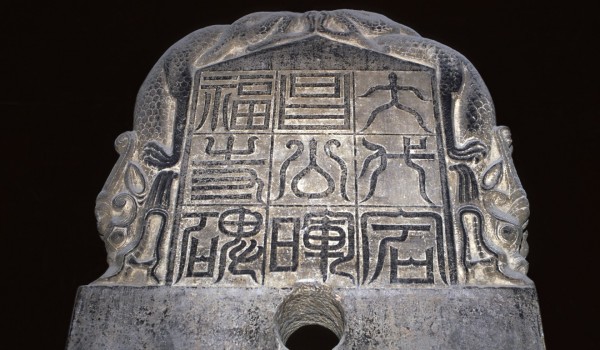The
religion arrived during the Tang dynasty via Middle Eastern missionaries, but
its fate was forever in the fickle hands of ancient China’s emperors
ishtartv.com - scmp.com
By Wee Kek
Koon, 21 Mar 2018
In
Greater China, Good Friday and Easter, which fall on March 30 and April 1
respectively, are public holidays only in Hong Kong and Macau. In fact, the two
special administrative regions are the only places in China where government
shuts down and most residents get a day off on Christian feast days. (In Macau,
All Souls’ Day and the Feast of the Immaculate Conception are also holidays.)
This
has less to do with the number of Christians in the two places – they form only
small minorities – than with the fact that Hong Kong and Macau were colonies of
European countries. Still, non-Christians in both places do not complain. Why
look a gift horse in the mouth?
Christianity
in China began, however, not in two European outposts on the south coast but on
the edge of the northern Loess Plateau in Changan (present-day Xian). The
earliest definite record of Christians in China was inscribed in both Chinese
characters and the Syriac alphabet on a stele unearthed in the early 17th
century.
The
inscription on the stele, erected in the year 781, gave a precis of Christian
teachings and mentioned Alopen Abraham, a missionary of Nestorian Christianity,
a branch of Christianity based in the Middle East that fell out with the church
in Rome over points of doctrine.
Arriving
in 635 at Changan, the capital of the Tang Empire, Alopen Abraham was granted
an audience with Emperor Taizong, who permitted him to propagate his religion
and build “temples of the cross” in China.
For
the next two centuries, Nestorian Christianity, known as Jing Jiao
(“Resplendent Religion”) in Chinese, spread within the empire, with churches in
cities as far apart as Lingwu (in present-day Ningxia), Chengdu and Guangzhou.
There are even records of Emperor Xuanzong (Emperor Taizong’s great-grandson)
engaging in religious discussions with Nestorian clergymen and participating in
Christian rituals.
Disaster
struck during the reign of Emperor Wuzong (840-846), an avowed Taoist who felt
threatened by the enormous wealth and influence of the Buddhist establishment
in China – Buddhism being the biggest foreign religion in the country.
During
his short reign, Emperor Wuzong launched a systematic persecution of Buddhists,
demolishing temples and monasteries, and forcing monastics to renounce their
vows. Unfortunately, Nestorian Christianity, along with Zoroastrianism and
Manichaeism – also foreign religions active in China during the Tang dynasty –
became collateral damage.
Nestorian
Christianity never recovered, even after Emperor Wuzong’s measures were
reversed by his uncle, who succeeded him after his death in 846.
Among
the reasons for the quick demise of Nestorian Christianity in China, despite it
having had a 200-year presence, was its overdependence on imperial and
aristocratic patronage for its propagation and continued existence. Another
reason might have been that the majority of Christian converts were found among
non-Chinese Central Asians living in China during the Tang dynasty.
The
convergence of these two factors suggests the Christian religion was associated
with the elite and foreigners in Tang-period China; it hardly made an
impression among the vast majority of the population. Without a strong
foundation, the whole house collapsed when the rain fell and the floods came.
It
would take four centuries before Nestorian Christianity made a small comeback
in China, during the Mongol Yuan dynasty, on the backs of Central Asians who
migrated to China and thrived under Mongol rule. However, it was also during
this period that the first Roman Catholic missionaries set foot on Chinese
soil, and they eventually supplanted the Nestorian Christians in the east.

The stele erected in 781, in Changan, that documents early Christianity in China. Picture: Alamy
|